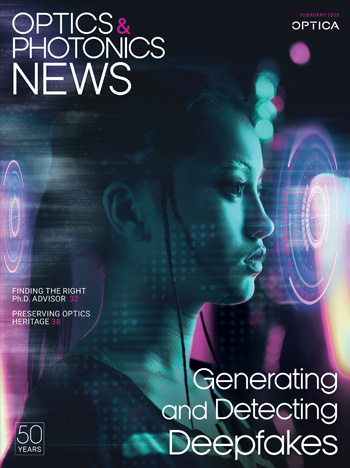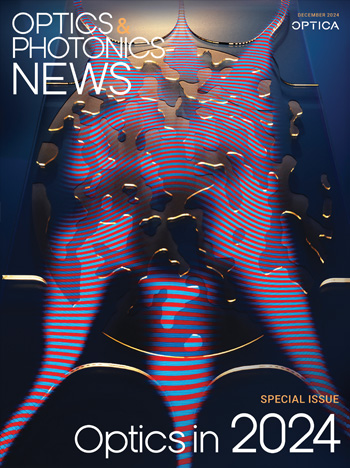
July/August 2005 Issue
Feature Articles
Beam: The Race to Make the Laser
Forty-five years ago, physicist Theodore Maiman and his colleagues made the first laser work at Hughes Research Laboratories in Malibu, Calif. Maiman performed the experiment on May 16, 1960, using an elegant ruby rod placed in a spring-shaded flash lamp.
by Jeff HechtHigh-Energy Petawatt Capability for the Omega Laser
The 60-beam Omega laser system at the University of Rochester’s Laboratory for Laser Energetics (LLE) has been a workhorse on the frontier of laser fusion and high-energy-density physics for more than a decade. LLE scientists are currently extending the performance of this unique, direct-drive laser system by adding high-energy petawatt capabilities.
by L.J. Waxer, D.N. Maywar, J.H. Kelly, T.J. Kessler, B.E. Kruschwitz, S.J. Loucks, R.L. McCrory, D.D. Meyerhofer, S.F.B. Morse, C. Stoeckl and J.D. ZuegelMesoscopic Electromagnetic Wave Dynamics in Ultracold Atomic Gases
Ultracold atomic gases present a unique medium for studies of classical and quantum optical phenomena. Recent research on coherent multiple light scattering in such media shows a range of surprising effects, and suggests possibilities for strong localization of electromagnetic radiation in a dense and ultracold atomic gas sample.
by Robin Kaiser and Mark D. HaveyTunable Diode Lasers: Expanding the Horizon for Laser Absorption Spectroscopy
Recent advances in broadly tunable telecommunications lasers will enable new approaches to laser absorption spectroscopy and greatly expand the ability of existing laser-based systems to perform trace gas detection. Researchers have already begun adopting these lasers in tunable diode laser absorption spectroscopy, photo-acoustic absorption spectroscopy and cavity ring-down spectroscopy.
by Alexander A. Kachanov, Eric R. Crosson and Barbara A. PaldusPolymer Optical Fiber Bragg Gratings
Silica-based optical fiber Bragg gratings are important in optical signal processing, but they have the disadvantage of being difficult to tune. Now, researchers have developed polymer optical fiber Bragg gratings that can fulfill most of the functions of their silica counterparts, plus greater tunability.
by Pak L. ChuDepartments and Columns
The Color of the Sea
In 1921, C.V. Raman took an oceanic voyage that led him to study the scattering of light and ultimately discover the vibrational effect that would come to bear his name.
The Beginnings of OPN
When Optics News was first published in 1975, it was a quarterly publication intended as a vehicle to announce OSA events. How far we've come since then.
Future Federal Policy not Promising for Science
Participants at the AAAS public policy conference heard a lot of gloomy predictions. It remains to be seen whether any of them will come to pass.
OPN’s First Light: Trends and Highlights from 1975
A look back at the year OPN was born.


![An artist’s rendering of a pulse of circularly polarized light hitting a 2D semiconductor. [Illustration by S. Alvey / University of Michigan]](https://opnmedia.blob.core.windows.net/$web/opn/media/images/articles/2025/0125/departments/202501-cover-web.jpg?ext=.jpg)
